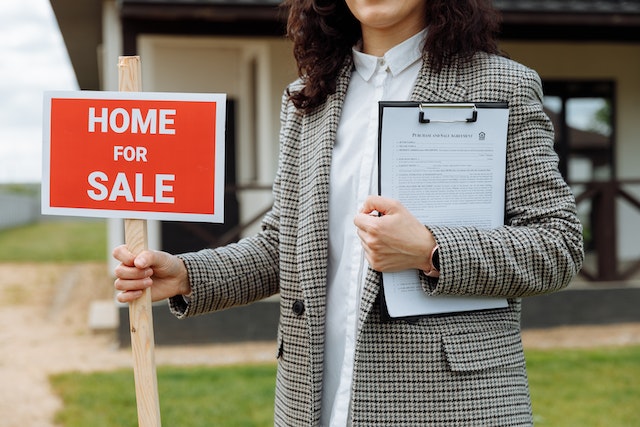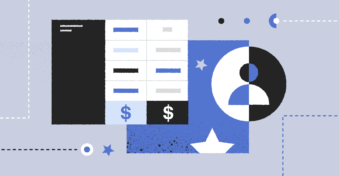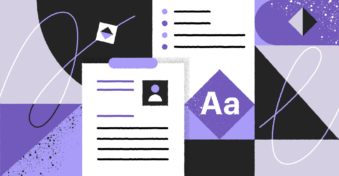With the cost of living rising exponentially over the past year, prospective homeowners are looking for ways to reduce the amount they pay when buying a home. One common way to save money is by waiving the appraisal.
However, applying for an appraisal waiver does not guarantee you’ll pay less because most applications fall short of the basic requirements. Also, certain real-estate laws limit your ability to obtain an appraisal waiver.
In this article, we’ll define an appraisal waiver in detail. We’ll also cover the pros and cons of waiving appraisals, as well as the process application requirements.
What Is an Appraisal Waiver?
Before discussing appraisal waivers, let’s define the appraisal process in the real estate sector.
When taking out a mortgage to buy a house, the lender has to send a registered agent to conduct an in-person inspection. This inspection will give the lender an officially-sanctioned estimated value of the property. But sometimes (for example, should you be in a hurry to buy the house in question), you may want to skip this process. That’s where the appraisal waiver comes in.

An appraisal waiver is a legal approval from the lender that allows you to refinance an existing asset or buy a new one without an in-person inspection. Essentially, appraisal waivers serve as a vote of confidence in the buyer’s ability to qualify for financing and pay back the loan.
However, appraisal waivers won’t exempt you from the evaluation completely. Instead of an agent coming to check the property, the lender will rely on digital underwriting software programs to determine the home’s worth. This software compares the home in question with similar properties within the same geographical area (“comps” in industry jargon) to generate an estimated value.
Also, lenders can deny or reject waiver applications at their discretion. Even if you meet the requirements, the lender can decide to conduct an in-person assessment.
Who Can Get an Appraisal Waiver?
According to Ryan Dibble, COO of Flyhomes, only borrowers with excellent credit, sufficient assets and are interested in properties that measure up to the loan-to-value (LTV) threshold can qualify for appraisal waivers. Also, appraisal waivers don’t apply to homes offered under the Federal Housing Administration (FHA), Department of Veteran Affairs (DVA), or Department of Agriculture Rural Development (DARD) loans.
Following the information on Fannie Mae, the government-backed, leading source of mortgage financing, the only real estate deals that qualify for appraisal waivers are:
- One-unit properties
- Principal residences and second homes
- Investment properties up to 75% LTV/CLTV
- Second homes and investment properties up to 60% LTV/CLTV
Lenders don’t offer waivers for new construction. To find out if the property you want to buy is eligible for an appraisal waiver, you can get further info by reviewing the on Fannie Mae website.
Why Do You Need an Appraisal Waiver?
The appraisal process can be a pain; you’ll have to wait for the lender to schedule the inspection and send an agent to the home. But you can avoid this stress by getting a waiver approved. Let’s explore other advantages of getting an appraisal waiver:
Save costs
Applying for an appraisal waiver means you no longer have to pay the inspection fee, which usually ranges between $450 and $2000 depending on property size and location. Although this fee is negligible compared to your mortgage, you can still shave it off your total expenses by skipping the appraisal.
Protect your health
With COVID-19 still a menace to society, skipping home appraisals can help protect the health of all parties involved. Canceling the in-person assessment means that no stranger will enter the home. Also, you can apply for a waiver to save yourself the stress of anticipating the outcome of the evaluation.
Expedite the purchase
If you are in a hurry to buy a home, you can apply for a waiver instead of waiting for the lender to sanction an in-person evaluation. By using an underwriting program (the above-mentioned use of software to generate comps), the lender can expedite the timeline of the purchase.
Dangers of Waiving your Appraisals
Despite the benefits of skipping appraisals, there are potential downsides you should consider. Here are the drawbacks of skipping home inspections:

You may not get the right estimate
Lenders often appraise a property to find out its exact worth. But without the appraisal, they have to rely on rough estimates, usually on the high end. As a result, you end up paying more than your home is worth. You could also end up with negative equity when you close on the home.
If you are looking to avoid dealing with unnecessarily high payments (most of us are), it’s probably best not to skip appraisals.
Waivers can be revoked
Automated underwriting systems (AUS) can quickly evaluate if you need an appraisal waiver or not. Since the system is automated, you could lose this right to obtain a waiver every time your credit score changes.
You might fail to spot potential defects
Since appraisal waivers allow you to skip property inspections, you run the risk of missing significant problems with the current condition of the building you’re looking to purchase. For instance, the house might have plumbing issues, and you won’t be able to tell unless a certified appraiser inspects the property.
You risk losing your mortgage application
Most appraisal contracts have a contingency clause. But the issue here is that your lender might reject your mortgage application if the software-generated value is above your initial offer. And if you cannot pay the difference, the seller will probably offer the deal to a more financially capable buyer.
How to Get Your Waiver Approved
To get an appraisal waiver approved, you need to apply with a certified lender (usually a bank, credit union or loan operator). Homes covered by the FHA and DVA are not eligible for appraisal waivers. To get your appraisal waiver approved, here are the tips to follow:
- Apply for a conventional loan on a property type that appraisal waivers can cover. Single-family homes and secondary residences within the proper LTV threshold all qualify for appraisal waivers.
- Boost your credit score. Although there are no specific requirements, having a high credit score puts you in better standing to apply for an in-person assessment waiver. Any score above 750 will help your case.
- Decrease your LTV ratio. The LTV ratio matters when applying for an appraisal waiver. Suppose you want to buy a house for $500,000 and you want to borrow $490,000; your LTV is 98%. In this case, your chances of getting the appraisal waiver are pretty low. So your target LTV should be below 75%. (In our example, this means seeking to borrow $375,000 or less when applying for a waiver.)
- Make a sizable down payment. If you pay some part of the property’s overall value, you can decrease the LTV by a few percentage points. So save up before buying a property.
- Seek legal assistance. Hiring a lawyer to guide you through this process will help you save time and may increase your chances of landing a mortgage.
- Use digital tools. Sites like Freddie Mac and Fannie Mae will help determine if you can waive inspection for your property. With tools like PandaDoc Waivers, you can sign, store, and share waivers for free.
Is an Appraisal Waiver Right for Me?
You are about to make a down payment or apply for a loan, but you have no idea whether to request an appraisal waiver. Let’s show you if you should seek an appraisal waiver.
- If you are convinced that the home is in tip-top shape, then you don’t need a third party for inspection. Otherwise, don’t waive your right to an assessment.
- If you can afford an appraisal, just pay the extra dollars to get it done. It will save you headaches down the line.
- If the home was appraised recently, you could use the current appraisal value to apply for a mortgage loan.
- If your home is not on the Fannie Mae list (i.e., a single-family unit or condominium), don’t bother applying for an appraisal waiver because it will get rejected instantly.
- If you are not in a hurry to move into the house, don’t waive the appraisal.
- If the home you want to buy is in a high-needs rural area (based on the definition by the Federal Housing Finance Agency), you can qualify for an appraisal waiver after completing a 3% down payment.
Don’t make hasty decisions when applying for loans (or appraisal waivers). Consult with experts before making any decisions.
Conclusion
Applying for an appraisal waiver is a tricky process, especially during this ongoing financial crisis. You can apply for one when making a down payment for the property you’re interested in. This will help you save time and money when closing a deal with the seller. However, waiving the inspection means you won’t be able to spot potential defects in the property. So go through this article thoroughly and follow up with the sources we’ve linked to above to see if waiving the appraisal is truly the right option for you.


